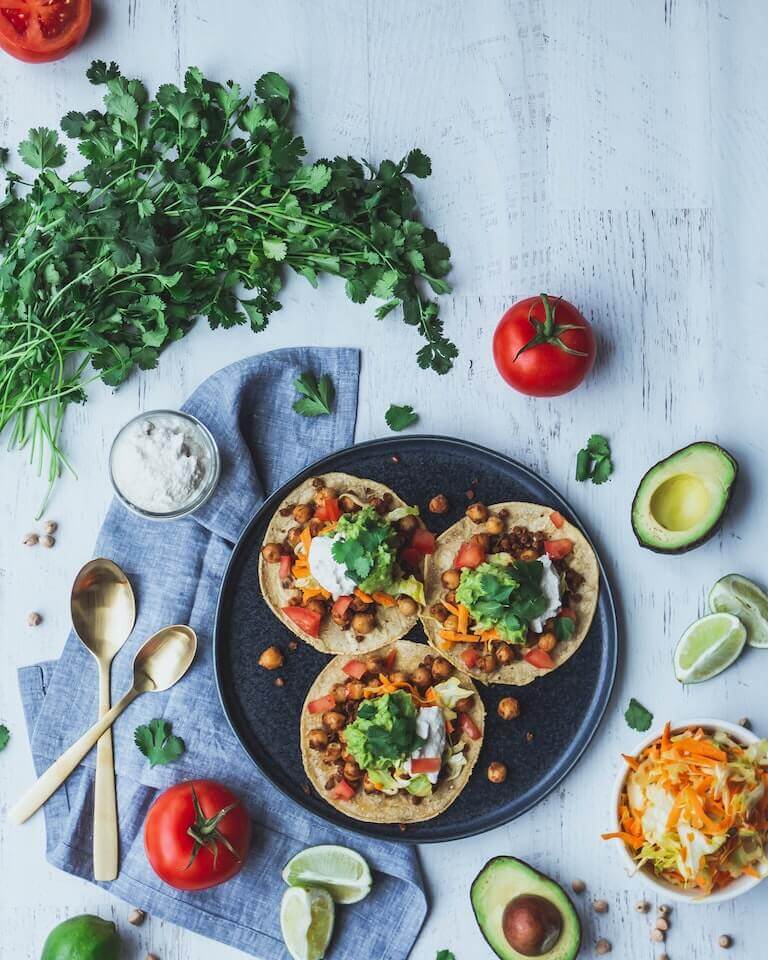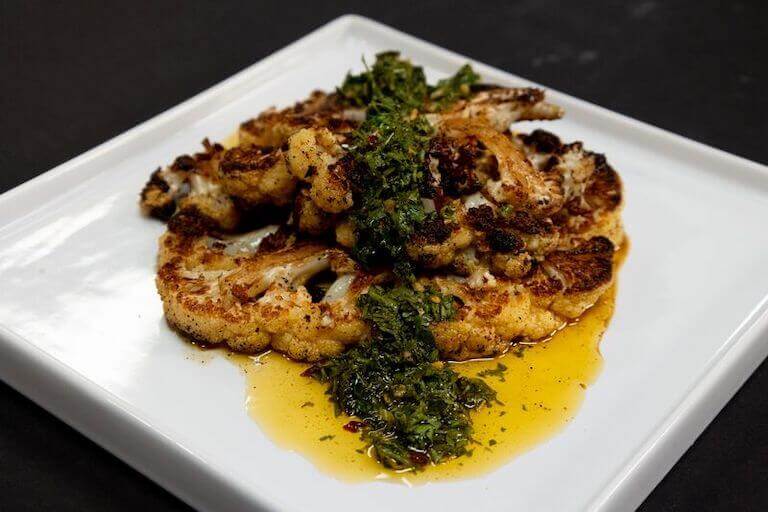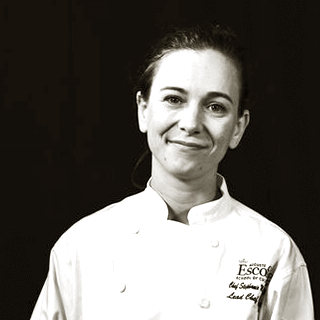Listen to This Article:
For some, it’s a matter of health. For others, it’s their ethics. And still others have seemingly endless reasons to investigate the plausibility of plant-based and vegan diets, from climate concerns and farmer’s rights to animal welfare. But what’s the difference between plant-based and vegan? Is there even a meaningful difference to begin with?
It turns out there are subtle but important differences, so if you’re working in a restaurant, it’s essential that you understand them. Sometimes, these two descriptors can be used interchangeably, but they’re technically quite distinct.
Let’s discuss what distinguishes a vegan diet from a plant-based diet and explore how culinary school can help prepare aspiring chefs to cook for these audiences.
Plant-Based vs. Vegan: What’s the Difference?
At first glance, you might think that the terms “plant-based” and “vegan” mean the same thing, but they don’t. Though both diets focus on ingredients sourced from plants, they differ significantly when it comes to their philosophies on both animal products and health.
Let’s dive more deeply into each term to explore.
What is a Plant-Based Diet?
“Plant-based,” is a blanket term that could describe vegans, but also vegetarians, or even those who want to limit their consumption of animal products without avoiding them completely.
Plant-based eaters generally focus on:
- Increasing the amount of plant-sourced ingredients in their diets.
- Minimizing, but not eliminating, animal products.
- Focusing on whole foods while minimizing processed foods.
- Emphasizing healthier cooking methods, like steaming and grilling, or raw preparations, to preserve the nutritional properties of the food.

Plant-based eating doesn’t necessarily avoid animal products, but it places the emphasis on plant foods like fruits, vegetables, nuts, and seeds.
In other words, the emphasis with plant-based eaters is less on strict adherence to a no-animal-product policy, and more about making choices toward positive change. For example, they may reduce their intake of meat and dairy by participating in “Meatless Mondays.” They may choose a vegetarian burger, but opt for some cheese. They may choose whole grains instead of more processed products and swap out meat for legumes like pinto beans regularly.
Methods like pescatarian diets, vegetarian diets, the Mediterranean diet, and even the Paleo diet may all be considered plant-based diets, or they can be adapted to be plant-forward.
So a plant-based diet is flexible, depending on a person’s health and well-being goals.
What Is a Vegan Diet?
Veganism, by definition, means that a person chooses to avoid any animal products. The breadth and depth of this varies, however. For most vegans, this means they won’t eat meat, fish, poultry, eggs, or dairy products, or anything else derived from animals. They may or may not still consume animal by-products, like honey for example.
Other vegans consider themselves “purists” and eliminate animal products from more than their diets; they don’t use or purchase clothing, cosmetics, or household goods made with animal products or subjected to animal testing.
There are many different paths to veganism. Some people decide to go vegan because of animal welfare concerns, while some simply just feel better physically and mentally when eating a vegan diet. Others are concerned with the environmental impacts of animal farming. And, of course, many vegans have a combination of these reasons as the foundation for their diet choices.
Additionally, under the “vegan” umbrella, there are many subsets of lifestyle choices, including the raw vegan diet (eating vegan foods that are raw or heated at temperatures below 104–118°F) for instance. Since veganism is a lifestyle choice, there’s truly no limit to how people choose to live it out in their daily lives.
Though veganism is often equated with “healthy,” the main philosophy is avoiding animal products. This means one can be vegan but eat a diet that includes processed foods, like meat substitutes, chips, or junk food.

Vegan diets usually avoid all animal products, including animal byproducts like honey or milk, and rely on plants for all nutrition requirements.
Plant-Based Versus Vegan Diet, Side by Side
When making menus for plant-based and vegan diets, they really aren’t that different. To compare side by side, here are some plant-based versus vegan substitutions to demonstrate just how subtle the differences can be.
Side-by-side comparisons of plant-based meals vs vegan meals
| Plant-Based Meals | Vegan Meals |
|---|---|
| Oatmeal with butter, berries, and almonds, and an egg | Oatmeal with margarine, berries, almonds, and a vegan sausage |
| Quinoa salad with veggies, feta, and grilled chicken | Quinoa salad with veggies and baked tofu |
| White bean and kale stew with bone broth and optional sausage | White bean and kale stew with vegetable broth |
| Scrambled egg with bagel and butter | Scrambled tofu with vegan bagel and margarine |
| Sliced turkey sandwich with regular mayonnaise and vegetables | Vegan cheese sandwich with veganaise and vegetables |
Chef Tips: Cooking for Plant-Based and Vegan Customers
As a chef, it’s crucial to know the differences between plant-based and vegan diets because your customers who choose these diets know what they want. Restaurants that offer these types of foods will get customers with many questions, as well as special requests. You’ll need to be both patient and knowledgeable, as people are trusting you with health and lifestyle choices that may feel very personal to them.
Additionally, many people with dairy allergies or other food sensitivities may choose plant-based or vegan restaurants because they feel their dietary needs are better cared for, so their health and well-being may depend on the accuracy of your menu.

Chefs must understand the differences between vegan and plant-based diets so they can best meet their customers’ needs.
Here are some important things to consider as a chef serving plant-based and vegan customers.
Plant-Based and Vegan Menu Development
As you create your menu, it is a good idea to provide a range of options from plant-based to solely vegan. A majority of standard restaurant fare does not meet plant-based or vegan requirements. Most restaurants provide at least one vegetarian option, but it’s rarely also dairy-free, meaning that vegans can’t eat it. A vegan option, like a vegetable soup and salad, would meet a vegan’s needs, but may not suit a plant-based eater’s desire for a little bit of clean protein with all of their vegetables.
Meeting these customers’ needs requires finding the overlap in a Venn diagram of vegan, vegetarian, and plant-based menu items. Creating menu items for these customers shows them that you care about providing something on your menu that they can eat.
Providing at least one vegan option, and one or two plant-based options that are gluten and dairy free but that include an optional light animal protein, like fish or chicken, would meet most dietary requirements.

Creating a few plant-based options, some of which are vegan, welcomes these types of customers into your restaurant.
Examples of vegan options include a salad with a vegan protein, like baked tofu, or tempeh, dressed with a creamy (but dairy-free) dressing and toasted seeds and a side of bread. Or a vegan burger with a slice of melted vegan cheese on a dairy-free bun with a side salad.
Make sure to include sources of protein in your vegan dishes, such as legumes, nuts and seeds, soy products like tofu, or meat substitutes like tempeh, as restaurants are often tempted to make their regular dishes, just without the meat. This can leave their vegan customers short on protein!

Vegan entrees, like this grilled cauliflower steak, can provide an option for customers who don’t eat animal products.
Examples of plant-based entrees include dishes that focus less on dairy, red meat, and processed carbs, like breads and pasta, and more on whole grains, whole legumes, a higher percentage of vegetables, and light animal proteins, like chicken and fish. Examples could include stir fries or rice bowls with lots of vegetables and a little protein, or vegetable-forward soups prepared with bone broth.
As you develop your menu, be aware that vegan ingredients in particular may need to come from different distributors than your regular supplier. If you’re developing a menu, be aware of the financial and logistical aspects of acquiring the foods you need for your dishes.
And finally, it’s helpful to label your menu items that can suit vegan, vegetarian, or plant-based eaters, to both help them feel welcome and to minimize questions.
Vegan Food Preparation
When it comes to preparing vegan foods in particular, you’ll need to be very mindful about food handling. Many customers who eat a vegan diet will expect meat and other animal products to be prepared in a separate workspace from vegan menu items, for example. (Of course, if you’re in a vegan kitchen, this issue will take care of itself.)

Vegan (and vegetarian) customers likely want their food, like this tempeh, prepared at dedicated vegetarian workstations.
With plant-based diets, this is less of a concern, unless your customers are vegetarians, or if they have food allergies or sensitivities, like to dairy or gluten. As a rule of thumb, when preparing vegan or vegetarian dishes, have dedicated equipment and work areas for preparation so you can confidently assure your vegans and vegetarians that there is no cross-contamination.
Attracting Plant-Based and Vegan Customers
Providing both meat-based meals as well as vegan or plant-based options is a courtesy to customers who have made personal or ethical choices with their diets. But it also may provide an incentive for customers to choose your restaurant. It makes family dining easier because there tend to be options for everyone, no matter their dietary preferences. But if your restaurant isn’t strictly known for having these options, you may need to promote your plant-based offerings so that vegans and plant-based dieters know you’ve got them covered.
Plant-Based and Vegan Diet Creativity and Cooking Skills
If you want to start your own plant-based or vegan kitchen, you’d better be excited about finding substitutions and trying creative takes on dishes. One of the most common misperceptions of vegan and plant-based diets is that the food lacks flavor or interest. Cue the comments about “cardboard” or “watery” or “leaving me hungry.” Few people will want to eat your vegan and plant-based dishes if the food is rated as dull or lacking in flavor.
The good news is that vegan or plant-based menus offer you an opportunity to show off your creativity and experimentation as a chef. For example, if you can find a way to make vegan macaroni and cheese or vegan cheesecake taste so good that non-vegans will want to order it too, you may be well rewarded with customer loyalty. Make sure to test your recipes with plant-based or vegan diners as well as regular diners to get honest feedback.
Plant-Based vs. Vegan Meals: A Comparison
It might be easiest to share some examples of plant-based versus vegan meals to illustrate what the differences are. The two diets can be similar with a few modifications.
A Sample Day of Meals: Plant-Based
Whereas a mainstream day of meals might include things like a bowl of cereal or toast for breakfast, a sandwich or pizza for lunch, and a meat-heavy entree with sides for dinner, a plant-based day will focus more on whole foods and menu options that incorporate lots of fruits and vegetables. Here is a sample daily menu for a plant-based eater.
Sample Plant-Based Daily Menu
| Breakfast | Egg white omelet with tomatoes, mushrooms, and spinach alongside a side of toast with almond butter. |
| Lunch | Couscous with chopped cucumber, feta, tomatoes, olives, and pine nuts, with or without grilled salmon, drizzled in extra virgin olive oil and balsamic vinegar. |
| Dinner | Portabella mushroom burgers with all the fixings — cheese optional — served with roasted potatoes and a side salad. |
These meals do not omit all animal products but include them more as side notes rather than as the main star. Instead, they emphasize healthy whole fruits, vegetables, nuts, seeds, grains, and cleanly prepared sauces and dressings.
It’s important to note that each of these dishes could be made vegan with some simple recipe modifications. For example, the oatmeal could be served without the butter, honey, and egg, but with margarine, maple syrup, and a plant-based sausage instead. The quinoa salad could be served without feta crumbles and baked tofu could be subbed for the sliced chicken.
A Sample Day of Meals: Vegan
Vegans will focus on preparing dishes that are fastidiously animal product-free. Though many vegans are passionate about focusing on healthy plant-based approaches, many others simply prepare meals that look more like mainstream American meals, but without the animal products. Here is an example of what a day of vegan eating might look like.
Sample Vegan Daily Menu
| Breakfast | A bowl of granola with fresh fruit and plant-based milk, like almond or soy milk. |
| Lunch | Vegan sandwich on sliced bread with Veganaise, mustard, lettuce, tomato, cucumbers, and sprouts OR a rice and bean burrito wrap with avocado and salsa. |
| Dinner | Tempeh and mixed vegetable stir fry served over rice OR spaghetti with red sauce and vegan meat substitute with a side mixed green salad, served with balsamic vinaigrette. |
Formal Training in Plant-Based Cuisine
Whether you want to try your hand at working in a vegan kitchen, or you want to start your own plant-based food truck, a formal culinary education can help prepare you for the real world. Auguste Escoffier School of Culinary Arts offers a variety of culinary programs, with tracks tailored to your interests and needs — including ones entirely focused on preparing plant-based foods.
Plus, during your time as a culinary student, you’ll undertake an industry externship that can give you hands-on experience in a professional kitchen environment or foodservice establishment.
And if you’re concerned that you’ll need to give up your own plant-based diet in order to attend culinary school, you can rest assured that this isn’t the case. Vegans and vegetarians can find plenty of like-minded company at Escoffier and program offerings that can suit your lifestyle.
ENJOYED THIS ARTICLE? CHECK OUT THESE ONES NEXT:
- What Exactly Is a Plant-Based Diet and Is It Right For You?
- How is Plant-Based Meat Made?
- What Credentials Do You Need to Be a Plant-Based Chef?
This article was originally published on September 13, 2021 and has been updated.




